10 Dec Tips from the Experts – Tag Storage
2020 is definitely a year for storage. People storage, food storage, storage around my belly, toilet paper storage…and now tag storage. We know it’s been a tough year and many deployments were canceled causing tags to go unused for several months. So, what do you do with your tags while you are waiting to get back on the water?
PART1
The first thing you can do is put your tags in “Stop” or “Shutdown” mode and store them in a cool, dry place. By cool, we mean ideal storage is around +5° C. This helps minimize passivation and keep the batteries charged. When stored correctly, batteries will only lose around 1-2 percent of battery life per year. If your tag has a battery isolator screw, remember to place the screw before storing the tags.
Tag Agent
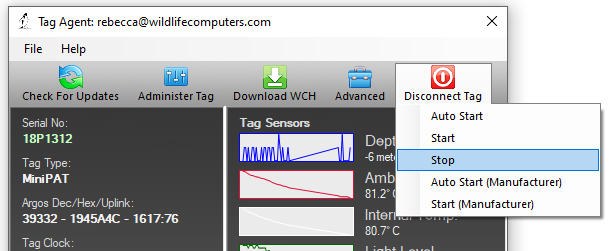
 Mk10 Host
Mk10 Host
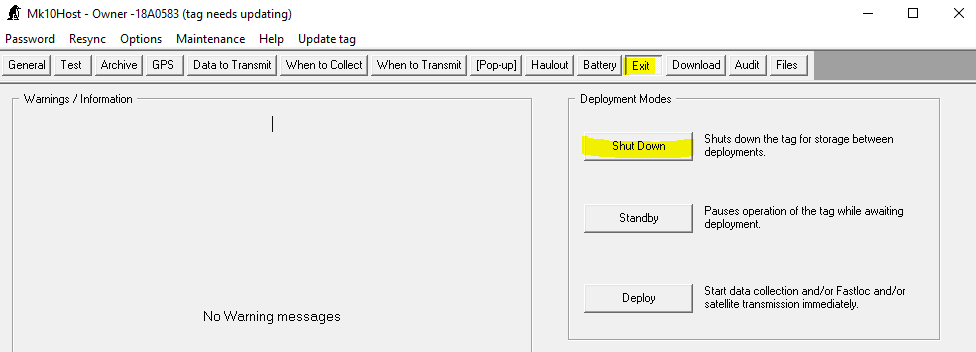
If your tags are being stored long-term (>3 months) it’s good to exercise the batteries every few months by sending a few transmission attempts—see part 2.
Then, when it’s almost time to get back on the water to deploy your tags—at least three months prior—connect to your tags again to ensure the sensors are working as they should. Three months will give you (and us) enough time to evaluate the tag(s) and ensure you have a working unit before going into the field—see part 2.
PART 2
Performing Transmission Tests in Tag Agent
- Select “Advanced” and then “Send Test Transmission.”
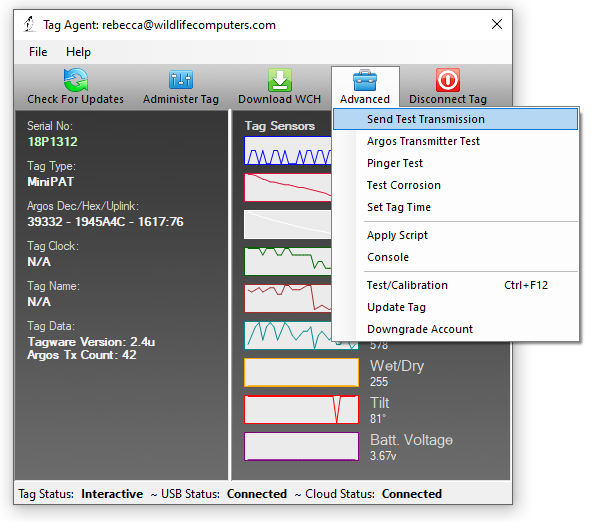 The test transmission voltage should read approximately 3.2v and the battery voltage displayed on the main sensor screen should be around 3.5v.
The test transmission voltage should read approximately 3.2v and the battery voltage displayed on the main sensor screen should be around 3.5v.
- If you receive a low voltage reading, it may be due to passivation forming during storage. We recommend repeating this test at least three times to dislodge the possible passivation layer.

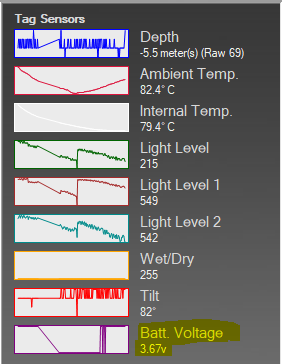
![]()
Performing Transmission Tests or “Immediate Test of Argos Transmitter” in Mk10 Host
- Select “Test” and then “Immediate Test of Argos Transmitter” tab on the far right.
- Click “Transmit.”

The immediate transmission voltage should read approximately 3.0v and the battery voltage displayed on the main sensor screen should be around 3.5v.
- If you receive a low voltage reading, it may be due to passivation forming during storage. We recommend repeating this test at least three times to dislodge the possible passivation layer.
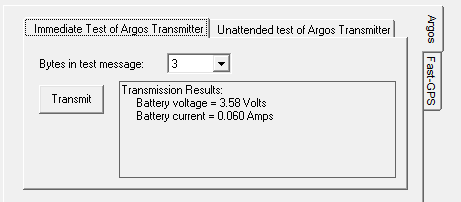 <<STOP>>
<<STOP>>
*If the test transmission voltage increases to the acceptable operating range after three transmission attempts, put those tags back into “Stop” or “Shutdown” mode and back in the cool, dry place.
*If the test transmission voltage continues to remain low after the first three transmission attempts before you call this tag a lemon, we recommend putting the tag out for a longer transmission test—see part 3.
PART 3
Conducting an “Argos Transmitter Test” in Tag Agent
- Click on the “Advanced Tab” then” Argos Transmitter Test.”
- Set your Seconds Offset, Transmit Count, and Seconds Apart.
- Seconds Offset—if testing multiple tags at one time, use this parameter to offset transmissions so the tags will not transmit at the same time.
- Transmit Count—refers to how many times you want the tag to transmit. 120 transmissions at a 60 second interval will provide a two-hour test, which usually coincides with a couple of satellite passes.
- Seconds Apart—the time between each transmission. The usual repetition rate for a MiniPAT is 60 seconds. When all of the tags are setup and deployed, take them outside where they have a full view of the sky.
- Click “Start Test.”
- When all of the tags are set up and deployed, take them outside where they have a full view of the sky.
- Reconnect the tag to Tag Agent and attempt three more tests to see if the transmission voltage level has increased.
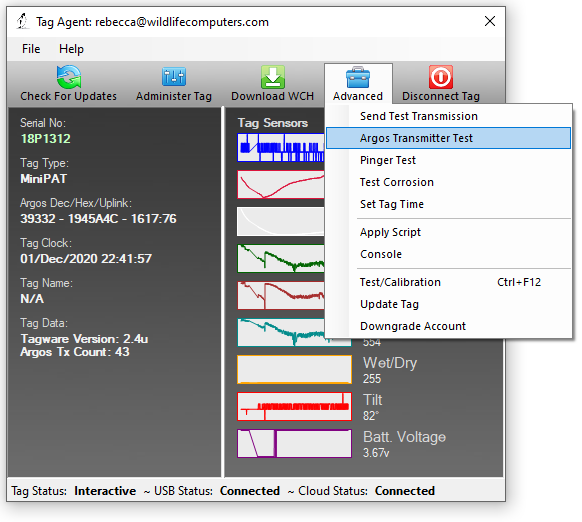
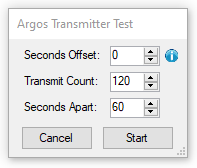
Conducting an Argos Transmitter Test or “Unattended Test of Argos Transmitter” in Mk10 Host
- Click on “Test” and select the “Unattended test of Argos
Transmitter” tab on the far right. - Set your First Transmission start, Transmit interval, Total transmissions, and Auto-increment
- First transmission at __ after the next minute—if testing multiple tags at one time, you can use this parameter to offset transmissions so the tags will not transmit at the same time.
- Interval between transmission is __—the usual repetition rate for these tests is 60 seconds.
- Total transmissions in test ___—how many times you want the tag to transmit. 120 transmissions at a 60-second interval will provide a 2-hour test, which is usually long enough to coincide with a couple of satellite passes. Check the satellite passes in your area prior to beginning the test.
- Auto-increment first transmission by __—this field causes subsequent tags within the Mk10Host session to have their “First transmission at” field automatically incremented to stop the tag’s transmissions from being simultaneous.
- Click “Start Test.”
- When all of the tags are set up and deployed, take them outside where they have a full view of the sky.
- Reconnect the tag to Tag Agent and attempt three more to see if the transmission voltage level has increased.

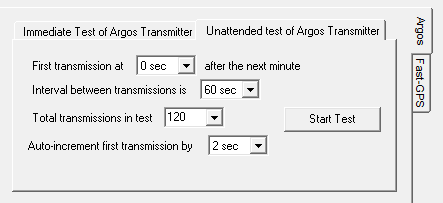
<<STOP>>
*If you tag sensors are operating within normal range after conducting the Argos Transmitter Test, put those tags back into “Stop” or “Shutdown” mode and back in the cool, dry place.
*If your tag sensors are still suspect after conducting both the Test Transmission and Argos Transmitter Test, contact your Wildlife Computers Technical Sales Consultant: tags@wildlifecomputers.com
We sincerely hope 2021 gets us, and our tags, out of storage and back where we belong—gathering data and advancing scientific research.
